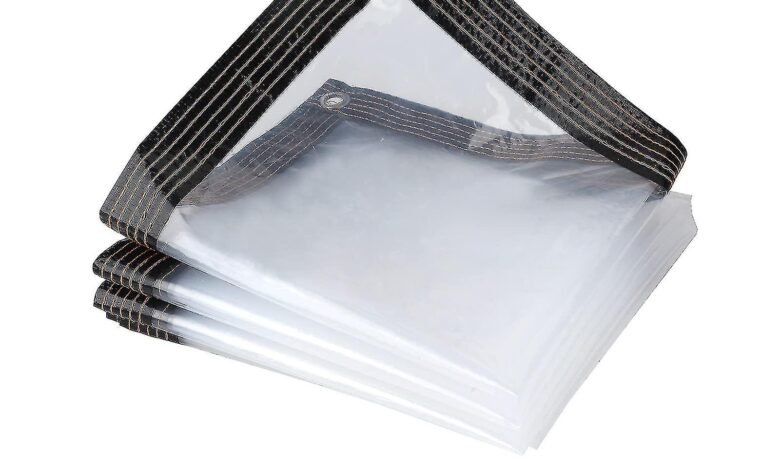
There are several key reasons why farmers utilize agricultural tarps or crop tarps to protect their crops from environmental threats. Tarps provide a cost-effective way to shield plants from excessive rainfall, hailstorms, frosts, wind damage, and more. By protecting crops with tarps, farmers can improve crop yields and quality.
What Types of Crops Can Tarps Protect?
A wide variety of crops benefit substantially from tarp protection. Here are some of the most common types:
Grapes
Grapes used for raisins and wine are often covered before harvest. This allows grapes to properly ripen while keeping them clean and preventing mold. Tarpaulins have increased Sultana raisin yields by 30%.
Tree Fruits
Tree fruits like peaches, plums, cherries, apples, and pears grow on delicate blossoms and fruit highly prone to bruising. Tarps prevent damage from hail, wind, and rain, improving the size and quality of the harvest.

Citrus
Citrus such as oranges, lemons, and limes grown in wet regions utilize tarps for protection. The moist microclimate under Clear Tarpaulin prevents fungal issues while improving the color and sugar content of citrus fruits.
Vegetable Crops
Vegetable crops like peppers, green beans, cabbage, carrots, and more are common tarp users. They ward off fungal rot while maintaining optimal growing conditions.
Young Orchard Trees
Young orchard trees are tented with lightweight tarps for wind protection, frost prevention and to increase early yields. This provides a better return on investment for orchard establishment.
Berries
Berries such as strawberries, raspberries, blackberries, and blueberries are very susceptible to rain damage. Tarps prevent berries from becoming waterlogged and rotten on the vine. According to the USDA, tarp usage increased strawberry yields by 25-30% in rain-prone regions.
Tomatoes
Tomatoes are a prime candidate for tarps. Not only does their low-lying fruit rot easily in rain, but blossom-end rot is a major issue caused by inconsistent moisture. Tarps mediated soil moisture and doubled tomato yields in many studies.
Choosing the Right Tarp Material
The material used for agricultural tarps is an important consideration that depends on climate conditions and intended use. Here are the main material types used and their characteristics:
Polypropylene (PP) Tarps
Polypropylene (PP) tarps are denser than PE and more UV resistant, lasting 5-7 years. However, they are stiff at low temperatures. PP is a good barrier against plant diseases.
Vinyl Tarps
Vinyl tarps last up to 10 years and are heat- and tear-resistant but more expensive than PE or PP. They remain pliable in colder weather and withstand UV very well.
Coated Fabrics
Coated fabrics such as polyester are heavy-duty options that can endure over 15 years of use. While long-lasting, coated fabrics are much more costly than plastic options.
Material Thickness
Material thickness also matters at least 6-8 mils is recommended to prevent tearing. Thicker tarps (10+ mils) withstand abrasions and punctures better but are stiffer and more costly.
Polyethylene (PE) Tarps
Polyethylene (PE) tarps are the most common and affordable option. They are lightweight, flexible, waterproof, and last 2-5 years. However, PE is vulnerable to tears and UV degradation over multiple seasons.
Installation and Removal Considerations
Proper installation and removal of tarps are important to maximize their protective benefits while minimizing crop stress. Here are some best practices:
Installation Timing
Tarps should be deployed just before anticipated threats, such as laying tarps 12-24 hours before a large rainstorm. This protects crops without the impacts of prolonged covering.
Seam Protection
Apply caulk or duct tape to potential leak points like seam intersections. Check for splits or holes which may weaken tarps over multiple seasons.
Drip Irrigation
If using drip lines, lay them before tarping. Drip emitters can be placed on top of tarps, but must be monitored to avoid drippage holes weakening tarps.
Temporary Storage
Roll loosely and tie loosely rolled tarps with twine on pallets or racks for easy retrieval next season. Repair any issues before the next use.
Ventilation
For very long-term use, provide cross-ventilation under tarps using passive vents, fans, or temporary removal on dry, sunny days to prevent moisture build-up or rot.
Read More Articles From: https://toastul.com/
Removal
Gradually remove tarps over 3-7 days based on crop, thinning edges first to harden off plants. Remove when the threat has fully passed and plants are established to prevent shock.
Anchoring
Tarps must be securely fastened to withstand the weather. Options include steel tent stakes every 4-6′, sandbags every 10-15′, or attaching to permanent hoop houses. Bury stakes at least 6″ deep and tie tarps using half-hitches or trenails.


